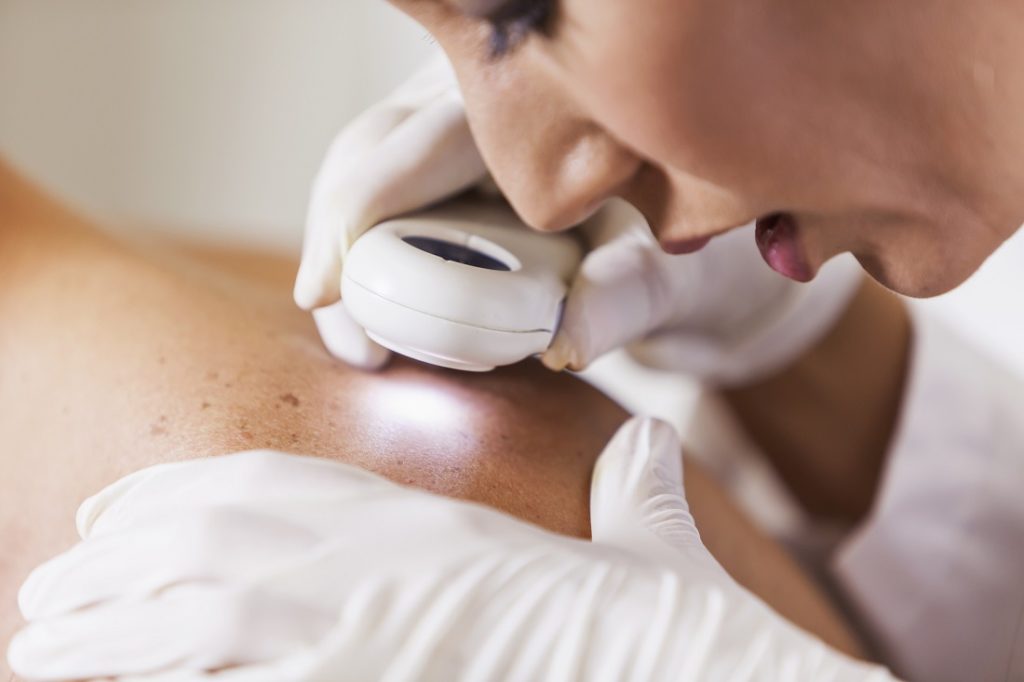Although the nonmelanoma skin cancer basal cell carcinoma (BCC) is rarely life-threatening, it can be troublesome, especially because 80 percent of BCCs develop on highly visible areas of the head and neck. These BCCs can have a substantial impact on a person’s appearance and can even cause significant disfigurement if not treated appropriately in a timely manner.
The fact is, BCCs can appear much smaller than they are. On critical areas of the face such as the eyes, nose, ears and lips, they are more likely to grow irregularly and extensively under the skin’s surface, and the surgery will have a greater impact on appearance than might have been guessed. Even a small BCC on the face can be deceptively large and deep; the extent of the cancer cannot be seen with the naked eye.
If such a BCC is treated nonsurgically (for example, with cryosurgery, which involves freezing the lesion with liquid nitrogen, causing it to crust, scab and then fall off), the chance of the cancer recurring is high. Unfortunately, treating a BCC that has returned is usually much more difficult than treating it precisely and completely when initially diagnosed.
BCCs on the trunk, arms and legs that cause concern are typically larger in size, but even a small BCC in these areas can have an irregular growth pattern under the skin if the initial biopsy shows the tumor is aggressive. In addition, a small BCC in an area previously treated with radiation may be much more aggressive than it appears on the surface. Again, treating such a tumor nonsurgically is likely to leave cancer cells behind.
The recommendation is to treat even small BCCs (and many squamous cell carcinomas) in critical areas of the face with Mohs surgery. This procedure is done in stages, all in one visit, while the patient waits between each stage. The surgeon first removes the entire visible portion of the tumor, then carefully maps where the tissue was removed from the surgical site so that under a microscope, it can be determined exactly where any as-yet-unremoved skin cancer is located. Tissue samples are then removed one by one, each sample mapped and then examined to see if any traces of cancer yet remain. This precision produces high cure rates and preserves the maximum amount of healthy tissue. Patients should also consider Mohs surgery when a BCC has recurred or has an aggressive growth pattern or poorly defined borders.
Mohs surgery is a first-line choice for many BCC patients, but discuss treatment options with your dermatologist. Choice of treatment is determined by factors such as the skin cancer’s size, location and your overall health.
About the Expert:
 Kishwer Nehal, MD, is director of Mohs and dermatologic surgery and codirector of the multidisciplinary skin cancer management program at Memorial Sloan Kettering Cancer Center in New York City. Dr. Nehal serves on the National Comprehensive Cancer Network (NCCN) panel on nonmelanoma skin cancer and the American Joint Committee on Cancer (AJCC) squamous cell carcinoma expert panel. She recently coauthored a major overview, “Update on Keratinocyte Carcinomas,” published in the New England Journal of Medicine.
Kishwer Nehal, MD, is director of Mohs and dermatologic surgery and codirector of the multidisciplinary skin cancer management program at Memorial Sloan Kettering Cancer Center in New York City. Dr. Nehal serves on the National Comprehensive Cancer Network (NCCN) panel on nonmelanoma skin cancer and the American Joint Committee on Cancer (AJCC) squamous cell carcinoma expert panel. She recently coauthored a major overview, “Update on Keratinocyte Carcinomas,” published in the New England Journal of Medicine.





